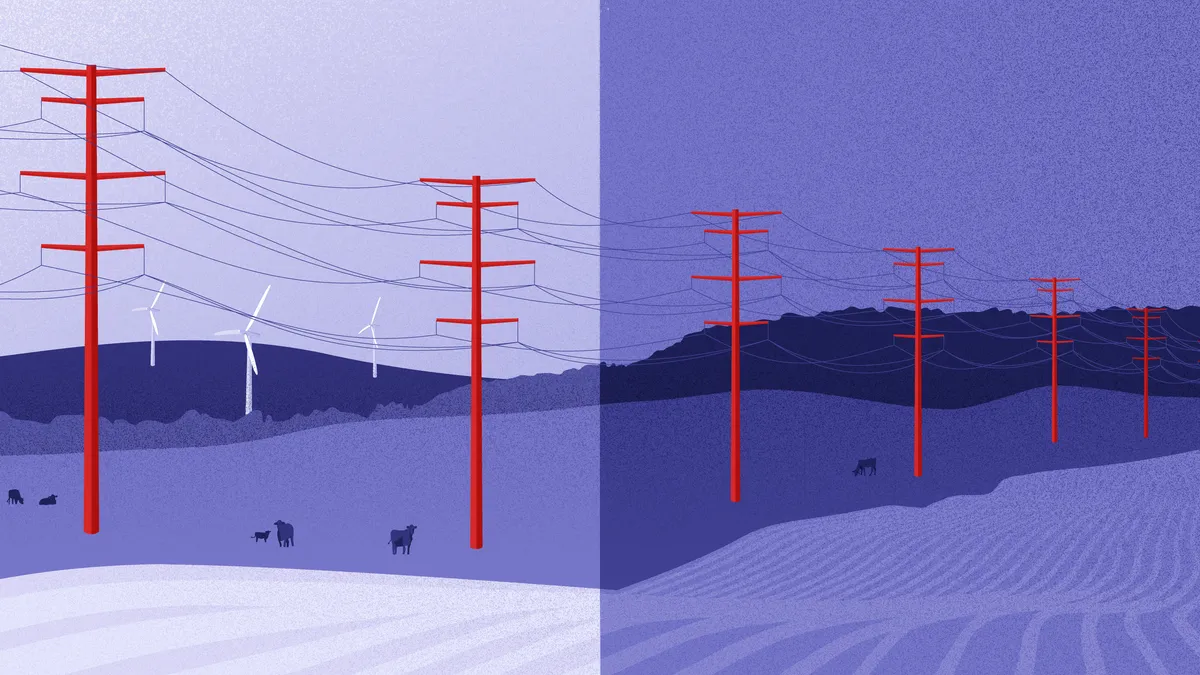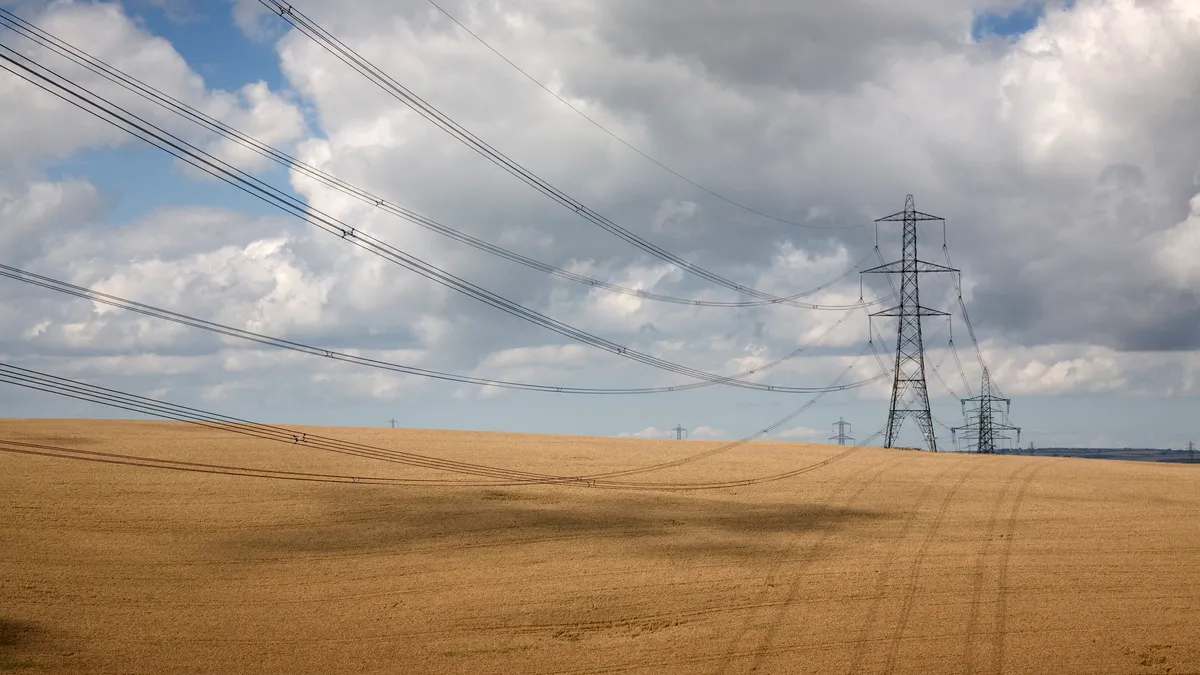The following is a contributed article by Devin Hartman and Beth Garza, director of energy and environmental policy and senior fellow, respectively, at the R Street Institute.
Bipartisan appetite for electric infrastructure is one of the few things mounting as fast as our public debt these days. This prompt for ambitious-yet-fiscally-constrained infrastructure expansion could be perfect for what the power grid of the future needs — a regulatory retool that lets competitive forces flourish.
Even with a congressional stalemate, the Federal Energy Regulatory Commission (FERC) has the tools required to achieve profound improvements in transmission policy, unleashing innovation, accelerating the clean energy transition, saving consumers money and enhancing grid resilience.
FERC's transmission agenda could vary immensely in scope and ambition, from adjusting project selection processes, to overhauling the regional planning and cost allocation framework, to addressing local transmission planning challenges. Some ambitious reforms are warranted. For example, former FERC chairs have called to overhaul interregional grid planning, while Commissioner Allison Clements recently called for consideration of reform to local planning processes under Order No. 890 as part of broader transmission planning reform. FERC is working with scarce resources and must prioritize reforms that get the most bang for their buck.
Fortunately, high-impact regulatory refinement is procedurally easy — no rulemakings required — but it will require FERC to take on entrenched incumbents who benefit from the status quo. Better implementation of the current framework that allows new entrants to compete fairly with incumbents and join regional transmission organizations (RTOs), including by constructing local upgrades under the same rules and processes as incumbents, would lead to swift benefits.
Competitive moats
Calling the history of transmission expansion anti-competitive is an understatement. In a forthcoming paper in the Energy Law Journal, Ari Peskoe, director of the Harvard Electricity Law Initiative, describes how local transmission monopolists maintain the status quo by capitalizing on FERC rules that insulate their projects from competitive pressures on the backs of captive ratepayers. Concluding that the "FERC regulated planning process is a protection racket," he argues that FERC should reclaim its transmission agenda by expanding the role for third parties in transmission planning.
The most recent of landmark FERC orders regarding transmission competition, Order 1000, is now a decade old and attracting much-needed scrutiny. Order 1000 had the objectives right: to promote efficient and cost-effective transmission development by facilitating greater competition between companies and technologies in transmission planning. Few stakeholders consider Order 1000 to have been successful in achieving that goal.
The reasoning for FERC's pro-competition transmission orders was sound, but poor implementation caused competition to languish as too few regional projects are within its purview. As with incumbents' efforts to block new entrants to RTOs and equitable transmission rate treatment, they have proved equally adept at maneuvering the regulatory process by exploiting the very exemptions allowed by FERC rather than outperform them in the marketplace.
Competition not only faltered for regional and interregional projects, which are under the purview of Order 1000, but the issue has not been addressed at all with respect to local projects and new entrants to RTOs. Incumbent transmission organizations (TOs) have systematically blocked third parties from pursuing local solutions like networked upgrades, despite the reliability demands of transmission-dependent utilities (TDUs) and renewables developers' willingness to pay. This explains the unreliable "holes" in RTO grids, which are most vulnerable to severe weather and restrain development of renewable-rich areas.
The benefits of competition among a larger universe of transmission providers are undeniable at the regional and interregional level, estimated easily in the billions of dollars of customer savings. At the local level, competition can provide entrapped TDUs with other options than a single provider to address their reliability issues.
Even where competitive suppliers do not win a competitive solicitation, their mere presence exerts cost discipline, better risk management and service enhancement from incumbents. For example, incumbent ITC Michigan lowered the costs of a proposed project by 28% for the City of Coldwater and increased the reliability profile of the project after it discovered it faced competition. Since that time, incumbents have proposed policies and engaged in "lawfare" — various obstreperous activities at FERC and RTOs to adjust rules in their favor — to prevent such competition within their wholesale territories.
Reclaiming the competition mantle
As the stranglehold of competitive moats mount, an orchestrated effort must reclaim the narrative on the virtues of enhanced competition throughout the electric transmission industry. Fortunately, transmission customers, competitive developers, clean energy interests and pro-market groups are starting to align. Independent legal experts and economists, such as the independent market monitors, have joined the chorus. In some cases, like a filing last year protesting the exclusion of "immediate need" reliability projects in PJM from competition, the monitors point out new entrants haven't taken strong enough positions against such carve outs.
Encouragingly, new entrant-customer alliances are now starting to challenge TO incumbents. These include Midwest Industrial Customers, which aligned with competitive transmission companies in the 2020 complaint challenging the Midcontinent Independent System Operator's (MISO) cost allocation rules for Baseline Reliability Projects. Reliability-sensitive entities and transmission-dependent entities, such as small municipal utilities and rural electric cooperatives, are seeking to remove regulatory barriers in the Southwest Power Pool (SPP) by contracting with independent transmission developers to provide customized transmission solutions to meet their customers' needs. And as incumbent TOs seek to stifle new entrants, the clean energy movement is on notice.
The transmission resistance — no pun intended — will need to mount a coherent agenda if it is to take on one of the most entrenched interests of any industry group, period. Infusing competition into transmission policy is the banner all these interests can support.
Impact without rulemakings
Without issuing a single rulemaking, FERC can bolster implementation of the current framework to give competition a true chance. Fresh FERC leadership can alter its posture to address stakeholder proposals to close regulatory loopholes that let incumbents circumvent competitive projects and handcuff new entrants. It can also reject bad initiatives, especially "lawfare" by incumbent TOs aimed at maintaining their monopolies within their transmission pricing zones.
A common "lawfare" method is for incumbents to redefine the rules governing transmission development and RTO integration in a way that undermines the commercial viability of new independent transmission companies. For example, incumbents have made recent attempts in PJM, MISO and SPP to restrict non-incumbent networked transmission facilities unfairly from inclusion in an incumbent TO's zone, while preventing cost recovery on the same "rolled-in" price basis that applies to their facilities. This would unfairly burden non-incumbent load with higher transmission costs than the incumbent's retail load. Upon cross-examination in some dockets, such as transmission facility placement in the SPP's zones, incumbents have even conceded that the "issue" is allowing a new TO in "their" zone, irrespective of the prudency of the network facility.
Among other things, FERC should eliminate unnecessary barriers to participation in competitive processes by standardizing qualification thresholds, direct the use of consistent selection criteria and demand transparency, such as enhancing RTO project cost reporting requirements. Competitive solicitations for top-down planning, namely regional and interregional projects, absolutely warrant expansion.
FERC should also focus on decision-making that will put all transmission customers and TOs on a level playing field, such as treating all networked transmission facilities equally regardless of incumbency status. Such an approach would go a long way to eliminate historic inequities, both in terms of service reliability and regional economic growth that depends on reliable infrastructure, while advancing critical clean energy deployment.
A question of willpower
Recognizing the customer benefits of competition, one might think transmission competition would be a no brainer. But as voluntary organizations, RTOs with fungible membership know full well that incumbent TOs butter their bread. As reported by independent monitors, TOs threaten to leave if RTO rules change to expose them to competition, including allowing new entrants at the local level. Compounding this is FERC's posture to be highly deferential to regional stakeholder proposals for implementing its broad transmission rules. The outcome is that current governance structures cede discretion to anti-competitive transmission fiefdoms where incumbents rule the roost.
Thus, the competition-skeptic dance may appear to be the result of democratic regional preferences when it's more likely an incumbent stranglehold. But stress fractures of incumbency bias are coming to light. The frustrations of consumers and competitive transmission developers with incumbent TO dominance were on full display in FERC's congressional oversight hearing in 2019.
More broadly, the anti-competitive consequences of incumbent TO advantage in RTO governance have been the subject of considerable recent and forthcoming research. FERC's transmission reform agenda will undoubtedly have a linkage to any RTO governance reform agenda ― namely revisiting Order 719 ― which may dislodge incumbent utilities as the "first among equals" stakeholder segment. But in the meantime, FERC has a lot of low-hanging fruit to pick.
As new FERC leadership embarks on a journey to catalyze the clean energy transition and bolster extreme weather resilience, infusing competition into transmission policy is a great theme to run with. While this ambitious agenda will take time, effective near-term actions FERC can take include subjecting more regional projects to competition, while allowing new entrants at the local level. Rebuffing incumbent TO's attempts to block new entrants to and equitable treatment within RTOs is an important first step that will yield quick benefits.
If customers, competitive transmission developers, clean energy interests and pro-market voices can form a joint agenda, the defining legacy of new FERC leadership may well be competitive infrastructure reform that propels the United States from laggard to the global standard. Yet even if the noble movement fails to organize, FERC can accomplish a great deal by simply responding to the real complaints of the disenfranchised.





















